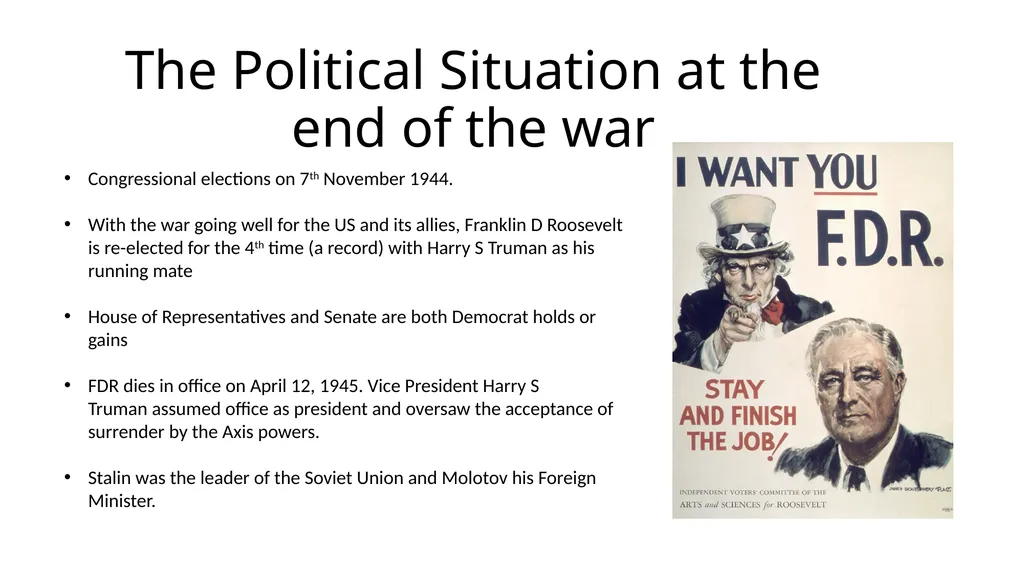
The Political Situation at the end of the war
Author: lois-ondreau | Published: 2025-07-16
Description: The Political Situation at the end of the war Congressional elections on 7th November 1944. With the war going well for the US and its allies, Franklin D Roosevelt is re-elected for the 4th time (a record) with Harry S Truman as his running
Download Presentation
Download the PPT/PDF: Download
Transcript:
Loading transcript…